Art Basel 2022
Booth P18
16 - 19 June 2022
Head-Image
FOR ART BASEL 2022 GOODMAN GALLERY PRESENTS WORKS BY
EL ANATSUI • WILLIAM KENTRIDGE • ALFREDO JAAR • GHADA AMER • CARLOS GARAICOA • SHIRIN NESHAT • KAPWANI KIWANGA • LEONARDO DREW • MISHECK MASAMVU • YINKA SHONIBARE • REMY JUNGERMAN • YTO BARRADA • DAVID GOLDBLATT
El Anatsui
El Anatsui is one of the most significant living contemporary artists. Anatsui is respected for his contributions to African modernism. Within his practice, he explores geometry and form through materiality. A key contributor to the Nsukka art school and various artistic movements that ensued in West Africa, Anatsui has found interesting ways to negotiate the complexities of what it means to create as an artist from the continent. In his latest work, Interventions, Anatsui continues his method of using materials that are ubiquitous and relevant to his environment — an arrangement of aluminium, copper wire and nylon string creates pathways and routes that challenge spatial contours.
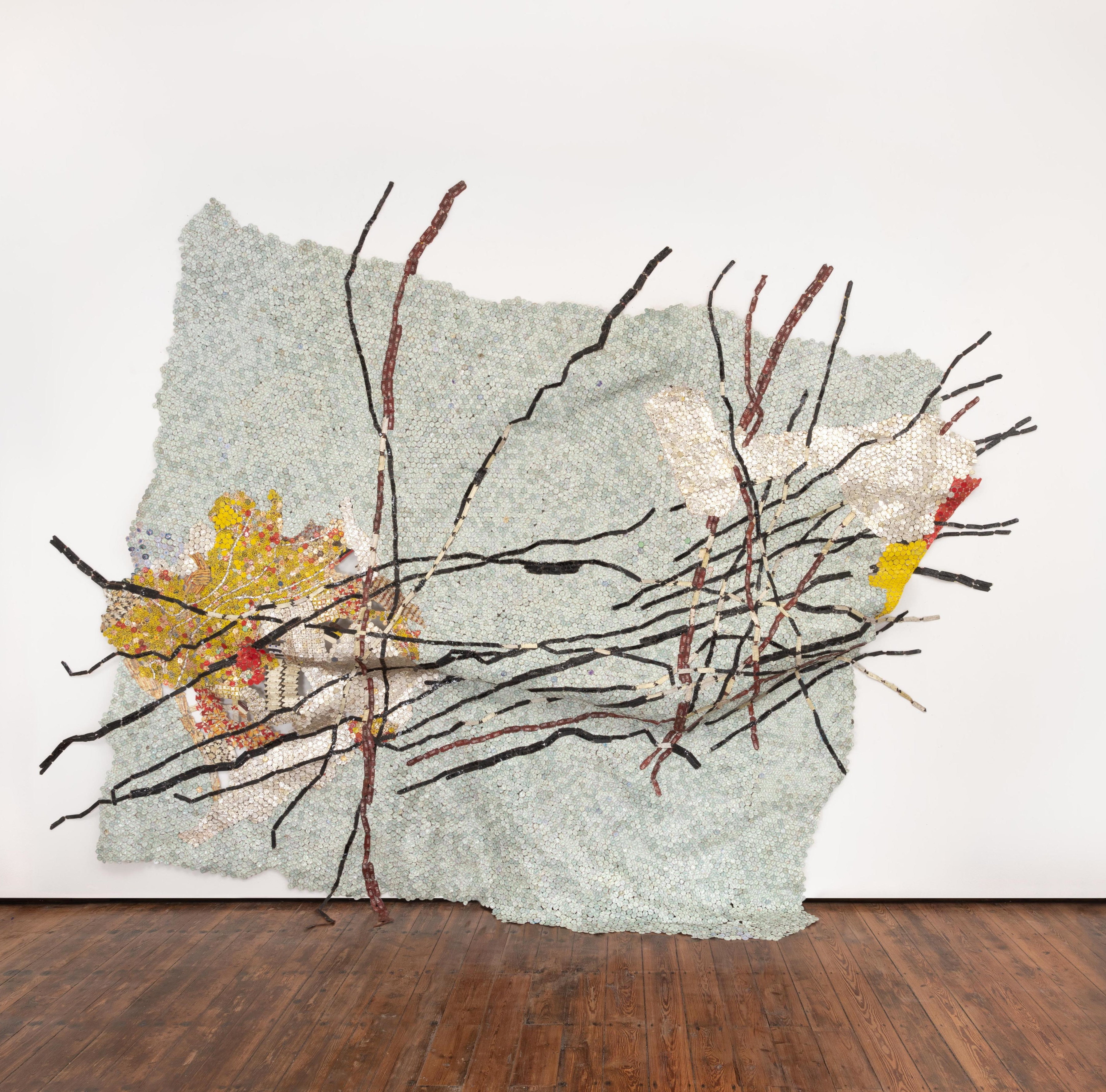
El Anatsui
Interventions
2022
Aluminium, copper wire and nylon string
Work: 400 x 400 cm
Unique
William Kentridge
William Kentridge’s botanical drawings of trees are rendered in Indian ink on the pages of old encyclopedias and attempt to capture the forms of trees indigenous to the area around Johannesburg. Using photographic references and drawing loosely in ink, the trees are grown page by page – each page holding only a fragment of the whole.
The complete botanical forms emerge more by recognition than by a pre-existing clarity as to what the plant must look like, as the pages are shifted, layered, torn, pieces added, marks added – until the tree reveals itself as complete. In an interview with Artnet, published in October 2021 Kentridge reflects on the images of trees as follows; “It is about allowing things to take their shape—I’m not quite sure why all these trees are being drawn. In one sense, they’re long-term self-portraits. I read somewhere a description of death that said we all grow our tree of death inside us. It starts growing when we’re born, and we have to hope that we’ll live long enough for this tree to be a great, beautiful, strong tree before it comes through us.”
Leonardo Drew
Leonardo Drew is known for creating wall-based abstract sculptural works that play on a tension between order and chaos. The artist typically uses manipulated organic materials to create richly detailed works – seemingly bursting from the walls – which resemble densely populated cities or urban wastelands and evoke the mutability of the natural world. Materials include wood, cardboard, paint, paper, plastic, rope, string and tree trunks. Typically, Drew titles his works as numbers reflecting that “In one way or another, I’m always learning from the viewer. The viewer is complicit in completing the work. Allowing the works to be numbered and not titled - then you would be clued in, “supposedly”, into what I’m thinking about. But a number is simply a way to catalogue and that’s it.”
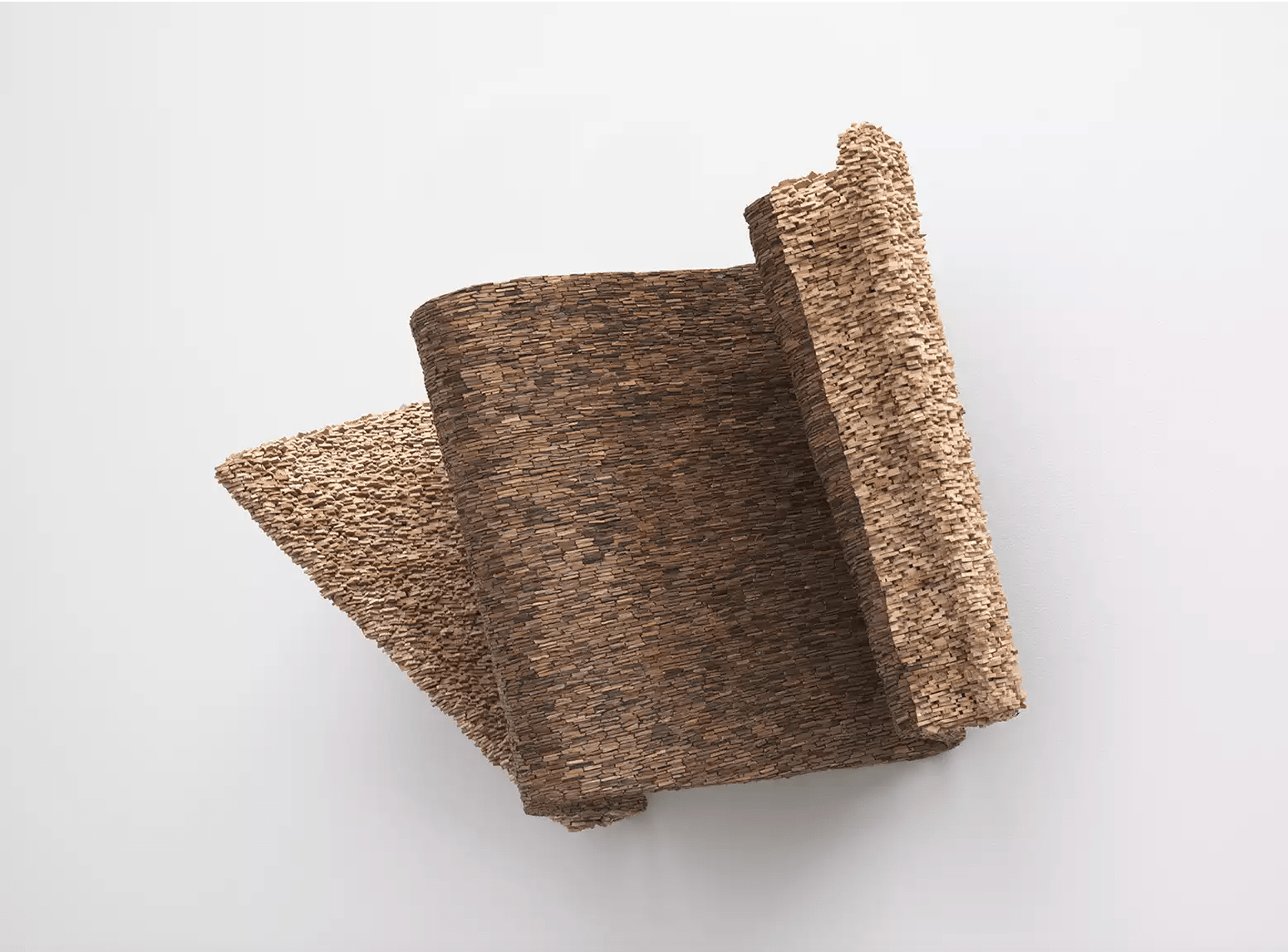
Ghada Amer
The citations that are carefully embroidered on Amer’s paintings do not speak directly about the status of women in a particular society nor do they address what is going on in the US or in the Middle East. Rather, her paintings remind the viewer that women must be vigilant over the rights they have acquired and never take their liberation for granted: “In Western societies, there is an assumption, especially among the younger generations, that the battle of the sexes has been won, that women have been liberated, and that their rights are secure. And yet, we are witnessing today a sharp regression of women’s rights and a stark rise of violence against women.
However, in countries where one assumes women’s rights to be limited or absent, such as in Egypt, Iran, Afghanistan, or Mexico, women of the younger generation know they have a lot to gain from fighting for those very same rights that are eroding in the West. So they are not letting down their guard and they are continuing to fight fiercely.”
Background Text: We were taught to fear the witches and not those who burned them alive. — Unknown
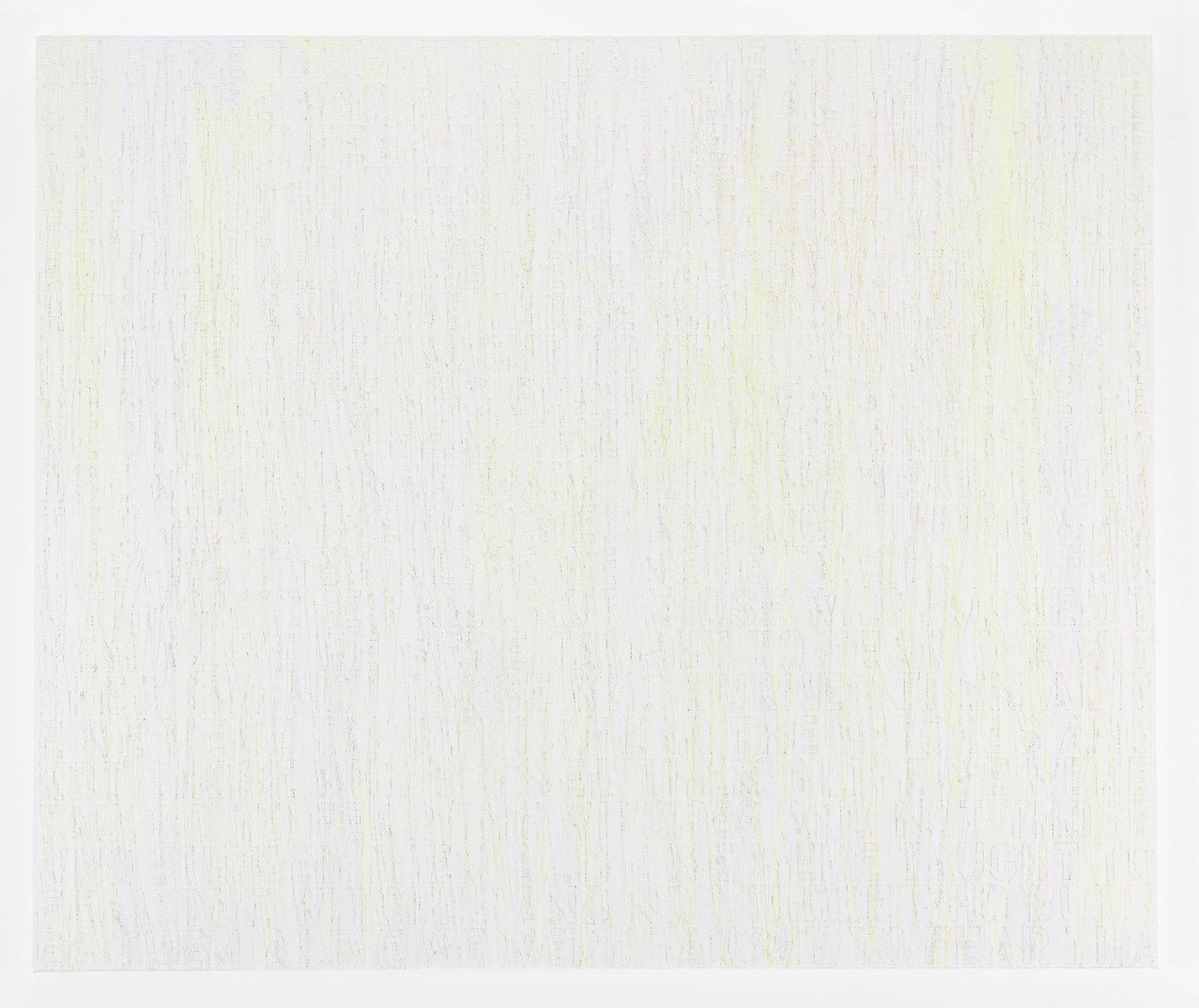
Ghada Amer
Witches
2022
Acrylic, embroidery and gel medium on canvas
Work: 127 x 152.4 cm
Unique
Remy Jungerman
Born in Suriname, the former Dutch colony in South America, Jungerman is a descendant, on his mother’s side, of the Surinamese Maroons who escaped enslavement on Dutch plantations to establish self-governed communities in the Surinamese rainforest. Jungerman honours his indebtedness to the culture of the Maroons through the act of creating. Across his practice, Jungerman draws parallels between the geometric patterns of textiles indigenous to Maroon culture and to Modernism, particularly the Dutch strain epitomized by Piet Mondrian. Connecting, juxtaposing or contrasting cultures is intrinsic to his pursuit of an autonomous visual language, which deftly interweaves the cultures of the countries that define him: Suriname, the Netherlands and the United States.
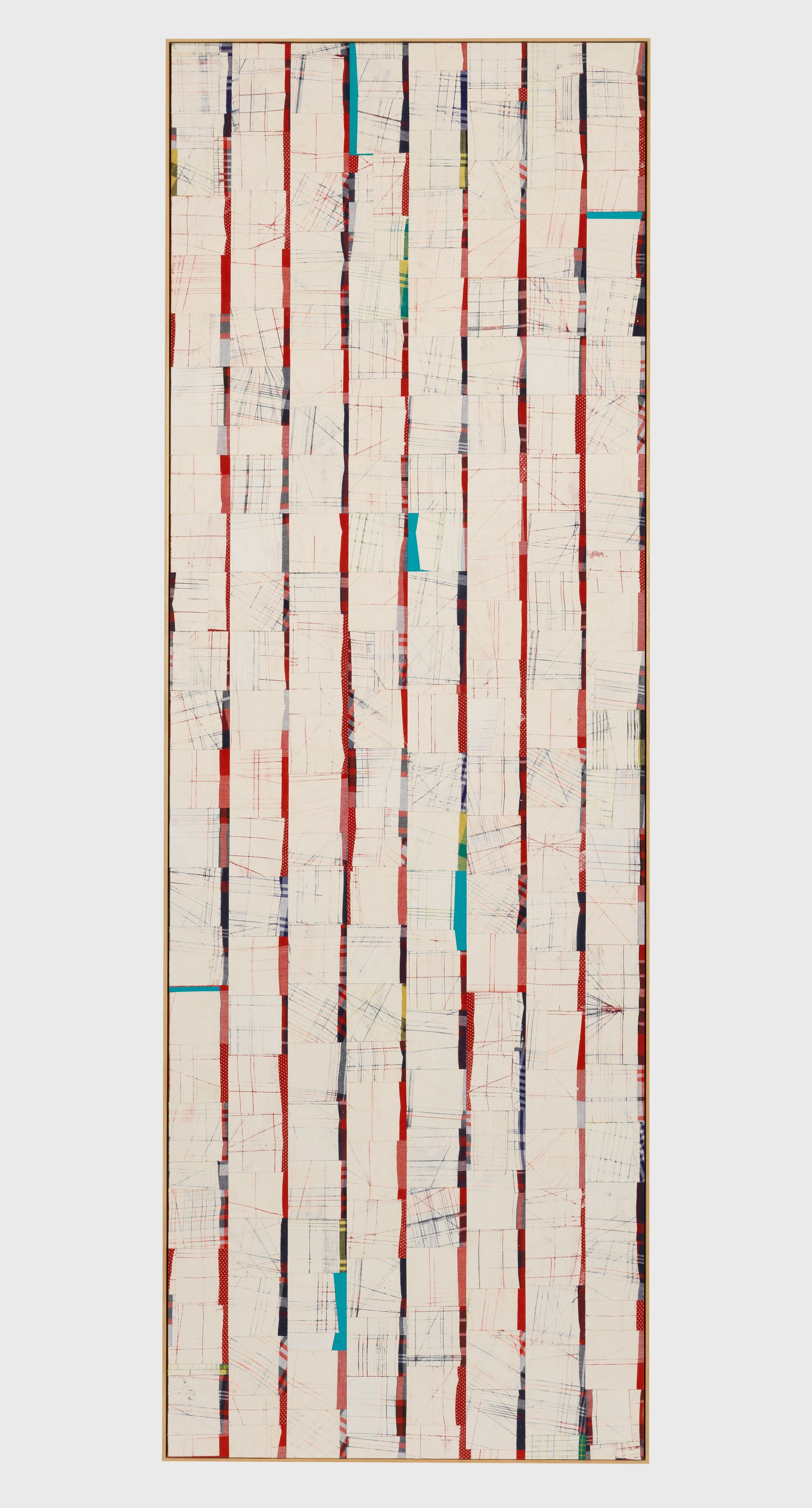
Remy Jungerman
Pimba AGIDA KAA V
2021
Cotton textile, kaolin (pimba) on wood panel (plywood)
242 x 82 cm / 95.3 x 32.3 in.
Alfredo Jaar
One million points of light by Alfredo Jaar was shot off the coast of Angola, in Luanda. It was taken while standing, facing the ocean directly towards Brazil, in memory of the 14 million slaves sent from Angola to Brazil. Jaar’s photograph is inviting in its beauty and physicality; the way in which the image has been photographed and Jaar’s decision to use a lightbox to display the photograph means that the surface of the image becomes almost tangible. It appears as if the light hitting the water becomes a layer that could be peeled back like skin, revealing the deep suffering to which the artist alludes.
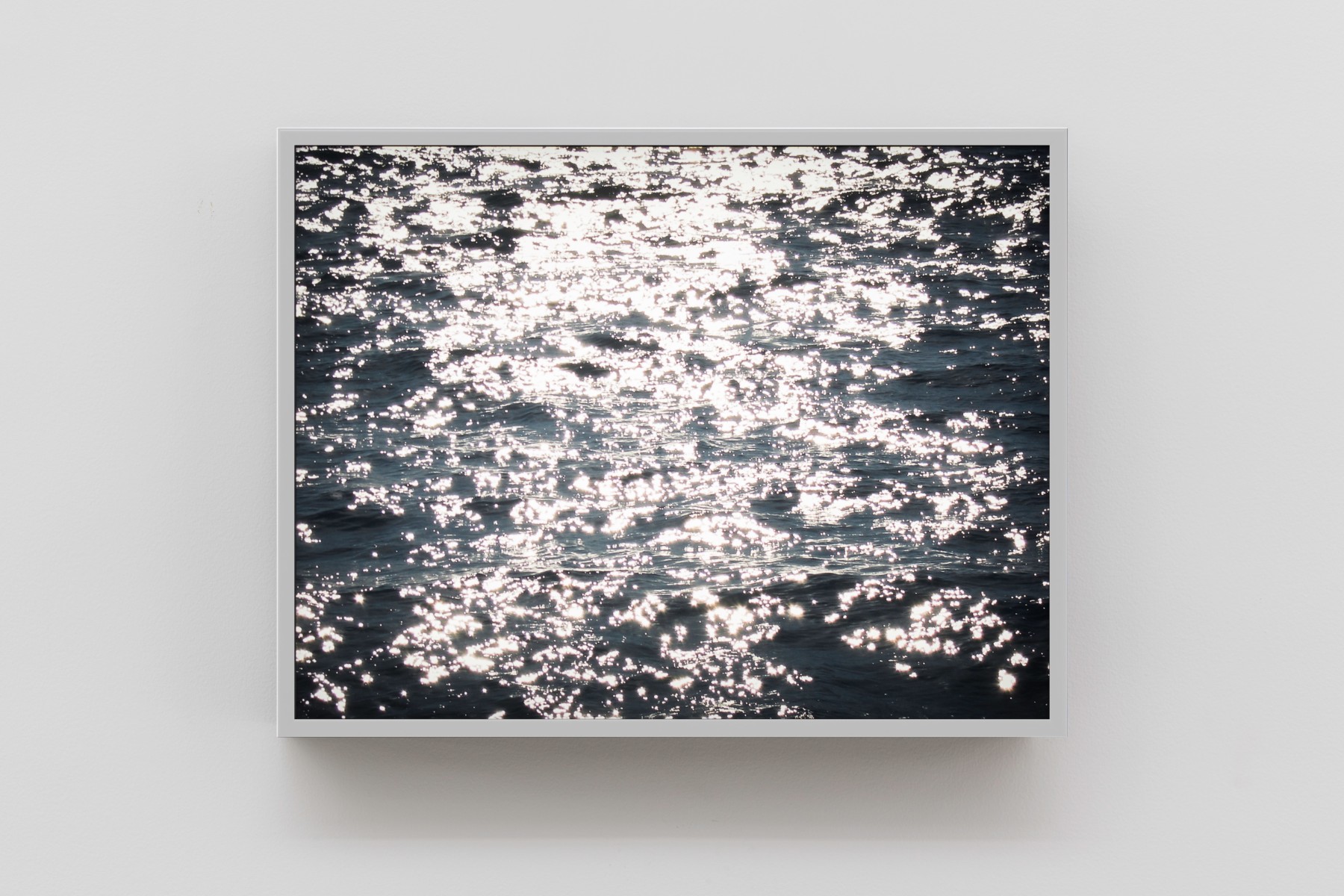
Alfredo Jaar
One million points of light
2005
Lightbox with Colour transparency, includes:
postcard box + postcards
Work: 45.7 x 61 x 12.7 cm
STD 3/3
Edition of 3
Yto Barrada
In the series of photographs, Plumber Assemblage, Fig.1 - 10, Tangier, Yto Barrada considers the romanticism attached to objects characterized as ‘foreign’ and through this process, examines how value is assigned. Found objects such as pipes, faucets, and spigots — which are reused in assemblages by plumbers to advertise their services in Tangier — are placed outside of their typical context in poses that reconfigure their meaning. The series was presented as part of Barrada’s first solo exhibition in Johannesburg; She Could Talk a Flood Tide own, in which she engaged different aspects of language and play — and through humour allowed for deeper reflection and a closer reading of objects, materials and processes.
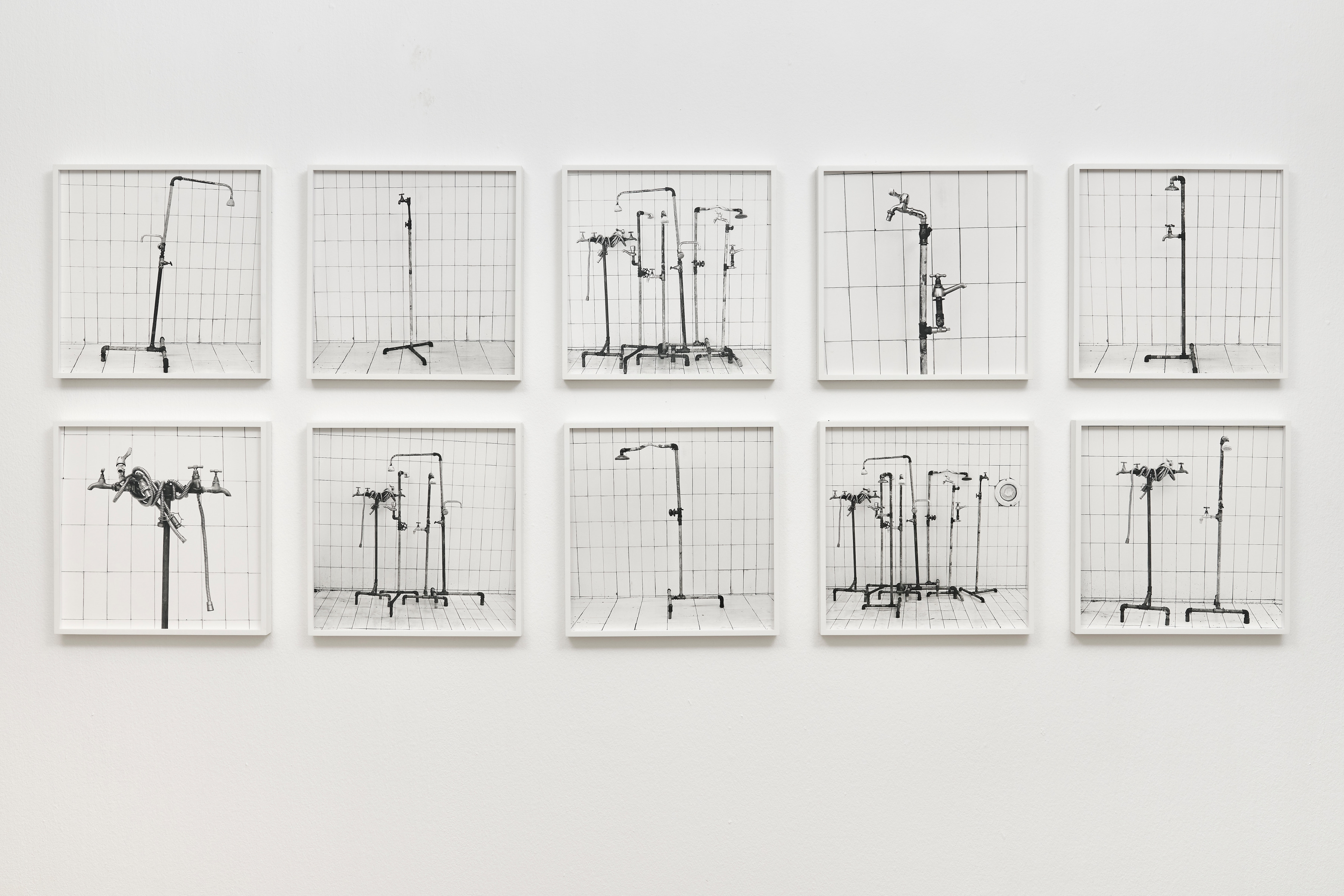
Yto Barrada
Plumber Assemblage, Fig.1 - 10, Tangier
2014
Gelatin silver print
Work (each): 50 x 50 cm / 19.7 x 19.7 in.
Frame (each): 52.8 x 52.8 cm / 20.8 x 20.8 in.
AP 1/2
Kapwani Kiwanga
In a sequence of quilt works created out of fabric treated with pigment and saltwater from the Atlantic Ocean, Kiwanga continues her investigation into the transatlantic slave trade. For the artist, the sea is an archive and witness of violent pasts. The cloth work combines and materializes her analysis of forced movement and liberatory strategies. Kiwanga’s use of symbols on textiles alludes to the safe houses along the Underground Railroad, often indicated by a quilt hanging from a clothesline or windowsill as a mode of communication. The geometric shapes function as conceptual coordinates of flight, escape and safety —by reading the motifs sewn into the design, an enslaved person on the run could assess immediate dangers. Various triangles, pointing upward, or to the right or left, indicate the direction towards safety whilst a black square indicates a place of safety and rest.

Kapwani Kiwanga
Moor
2022
Fabric, pigment, Atlantic sea salt
Work: 122 x 122 cm
Unique
Misheck Masamvu
Oscillating between abstraction and figuration, Misheck Masamvu’s works allow him to address the past while searching for a way of being in the world. His layered painted surfaces and brushstrokes, which are almost visceral, exist as remnants of the physical act of painting and give the sense that multiple temporalities have been included in one picture plane. Beneath the surface of one painted image, an infinity of others exist.
Full Monty is amongst one of the more abstracted paintings within Masamvu’s oeuvre but there are certainly other paintings that have been executed in a similar style and vein. What is most fascinating about these more abstracted works is how Masamvu has utilised space and line within the canvas. Using these aspects and qualities in an abstracted mode, much like Willem de Kooning and other expressionist painters, Masamvu creates an imagined environment that is not associated with any particular geography. Rather, paintings of this nature should perhaps be understood as a psychological landscape – one which points to an alternative reality where each layer of paint, or brushstroke on the canvas, proposes a search to resolve conflicted experiences or decisions.
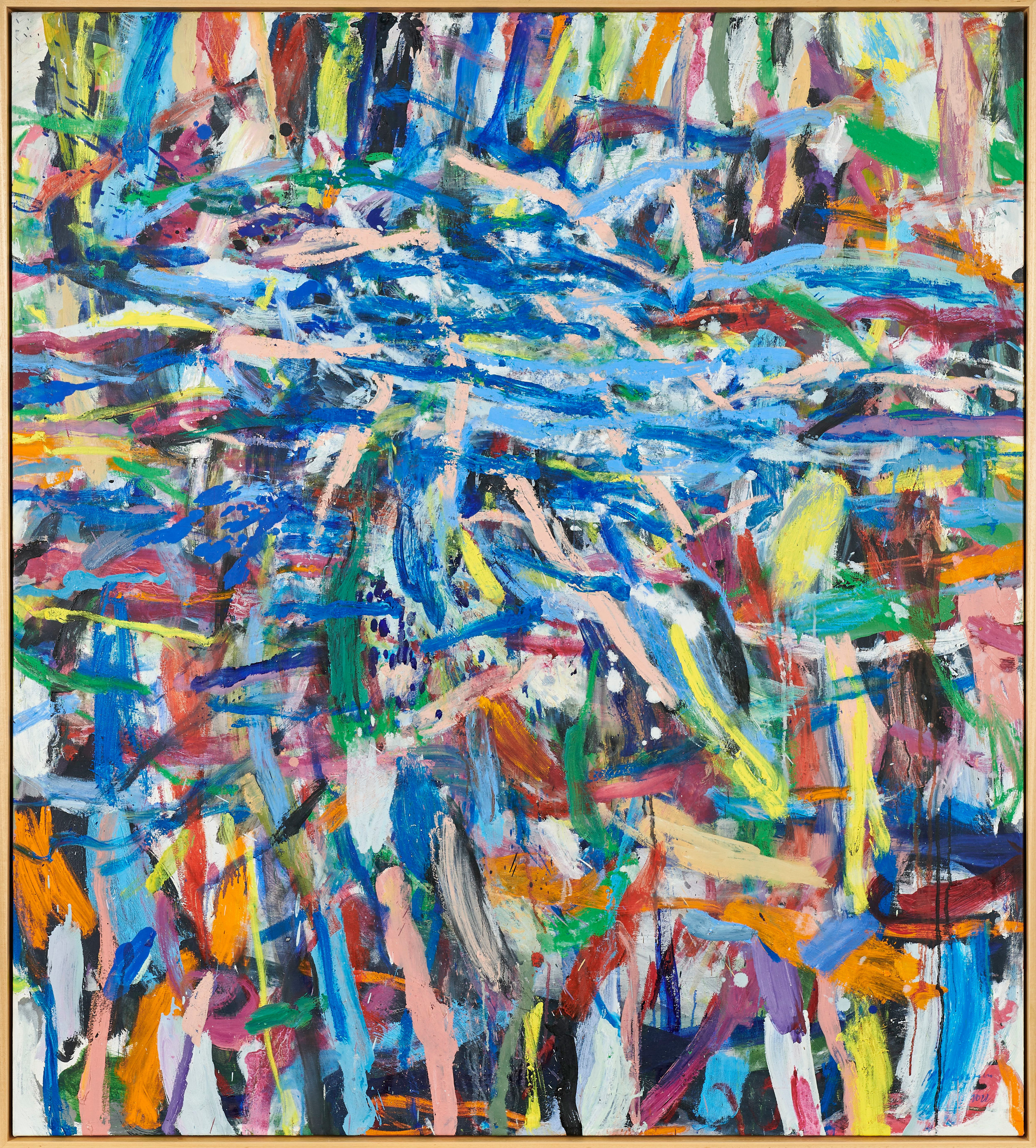
Misheck Masamvu
Full Monty
2022
Oil on canvas
Frame: 143 x 129.5 cm
Unique
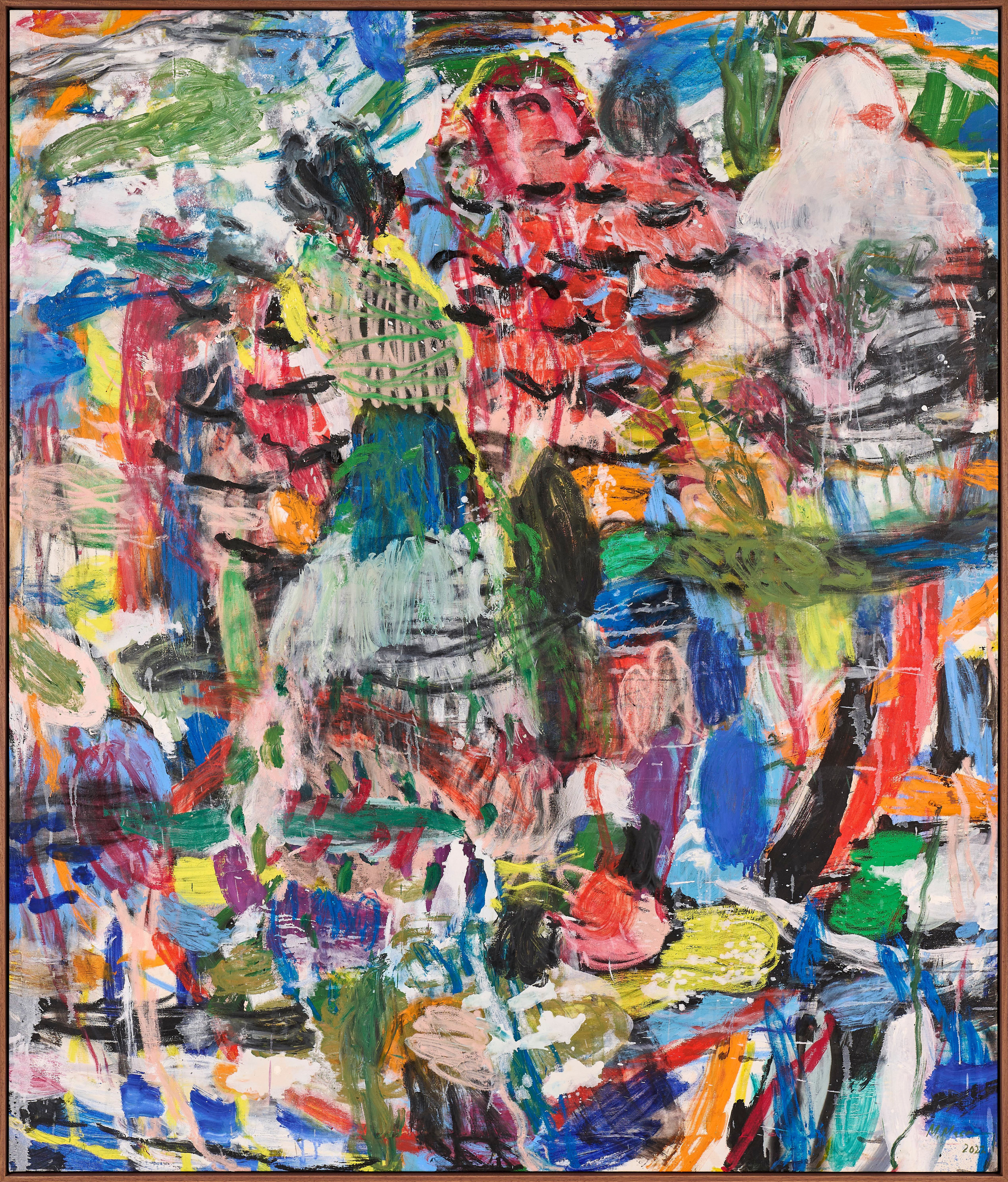
Misheck Masamvu
Botanical Feud
2022
Oil on canvas
Frame: 198.5 x 169.2 cm
Unique
Misheck Masamvu uses painting and drawing as a way in which to investigate human existence and our relationship to the natural world. Central to his practice is abstraction, which the artist employs to explore “the language and politics of space”. While abstraction forms an integral part of Masamvu’s practice he does not let go of figuration completely. Rather, his figures appear within the abstracted space he creates, attesting to his continued belief in the narrative potential of painting. For the artist, his paintings are understood as marks of existence, pointing not only to the realities of his lived experience but also to mental and psychological space, where each layer of paint, or brushstroke on the canvas proposes a search to resolve conflicted experiences or decisions.
"I use both figuration and abstraction in my work because I am looking for a new alternative space – one that is against the forced ideology of government and the breakdown of the pursuit of humanity. For this, the symbolism of the landscape and the figure in constant states of entangled metamorphosis are important. I am aware of the communion of the body, the soil and spirit and am interested in how transfiguration and memoirs of body and soul can evoke a real sense of vulnerability", says Masamvu.
With a technique that is immediate and direct, Masamvu's works consist of layered painted surfaces, abstracted forms and brushstrokes which are almost visceral and exist as remnants of the physical action of painting. In establishing a distinct abstract visual language, one gets the sense that multiple temporalities have been included in one picture plane and that beneath the surface of one painted image, an infinity of others exist. The outcome of which is a porous pictorial space, one that moves between representational clarity and rich, abstract abundance.
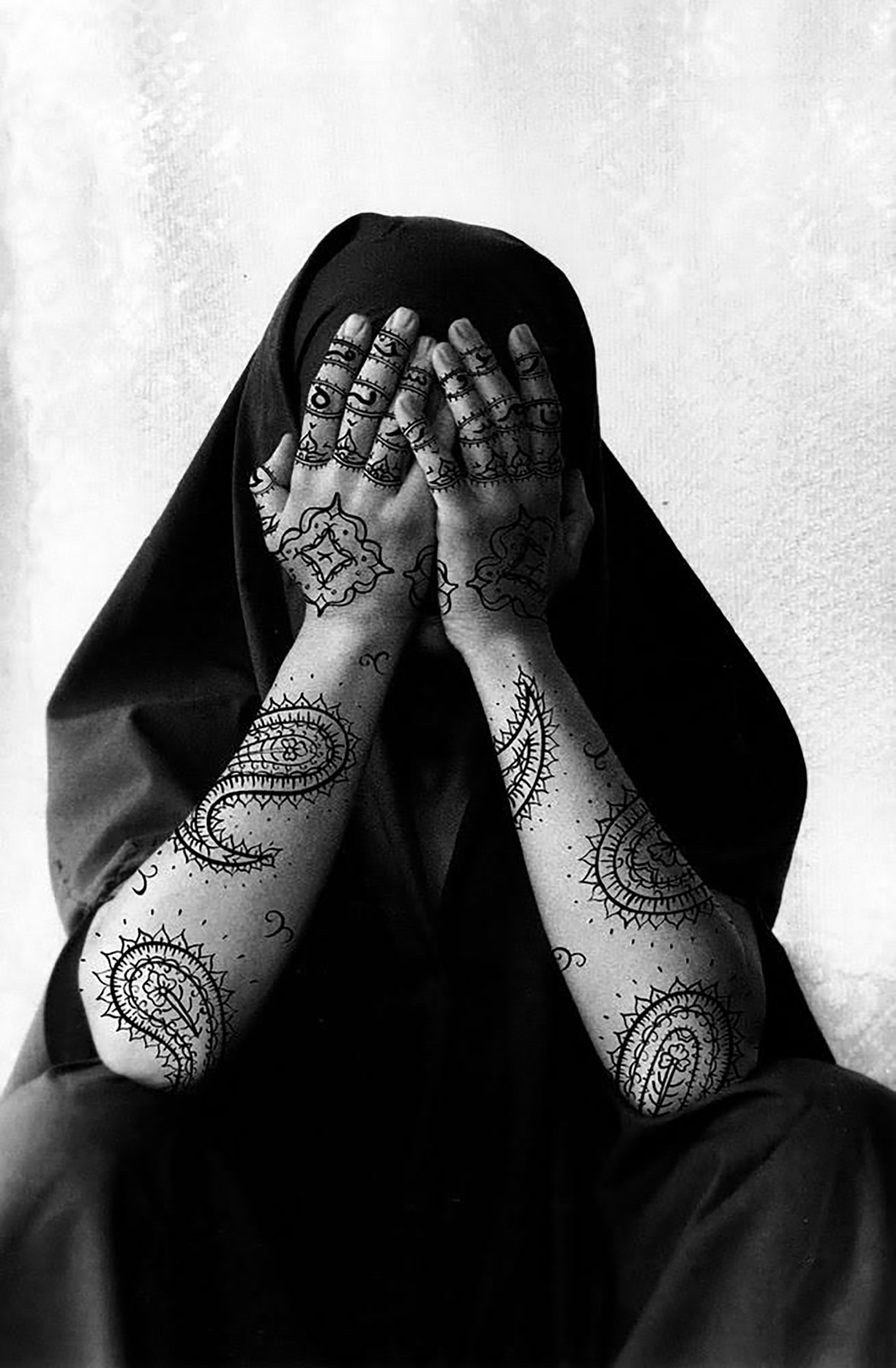
Shirin Neshat
Shirin Neshat’s work explores issues such as gender politics, self-definition and religious authority. Primarily using female imagery, she examines political and societal change in Iran. For the artist, Iranian women embody this political transformation, so that “by studying a woman, you can read the structure and the ideology of the country”. Neshat occupies an influential and highly respected position in the international contemporary art world, not only for her formidable artistic talent but also for her long history as a writer and cultural worker. Her socially-based practice uncovers hidden histories and engages with marginalised lived experiences; constructing expanding visual archives which claim legitimate, visible spaces for her subjects. By proposing these different modes and perspectives of representation, Neshat’s works serve as prime examples of the nexus of art and social activism.
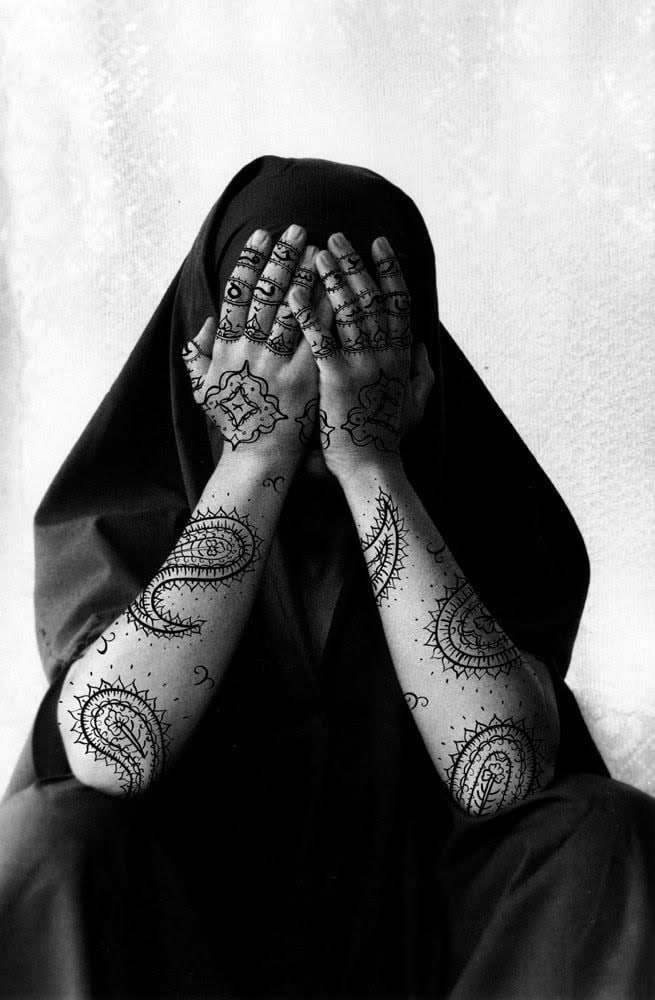
Shirin Neshat
Stripped
1995
Black and white RC print and ink (photo taken by
Kyong Park)
Work: 35.6 x 27.9 cm
Frame: 53.3 x 40.6 cm
STD 9/10
Edition of 10
Carlos Garaicoa
Garaicoa is one of Cuba’s most significant contemporary artists. Through a multidisciplinary approach, Garaicoa addresses issues of culture and politics with a reflexive lens into architecture, urbanism and history. His work has been included in the Biennials of Havana (1991-2019), São Paulo Biennale (1998, 2004, 2010), the first Johannesburg Biennale (1995) as well as the Venice Biennale (2005, 2009, 2018), among others. In his essay, Between Apparatus and Subjectivity: Carlos Garaicoa’s Post-Utopian Architecture, Okwui Enwezor described his practice, “Garaicoa is perhaps one of the most significant artists of his generation to develop a sustained aesthetic and analytical framework that would fuse the heritage of modern Cuban art and its complex political structure.”
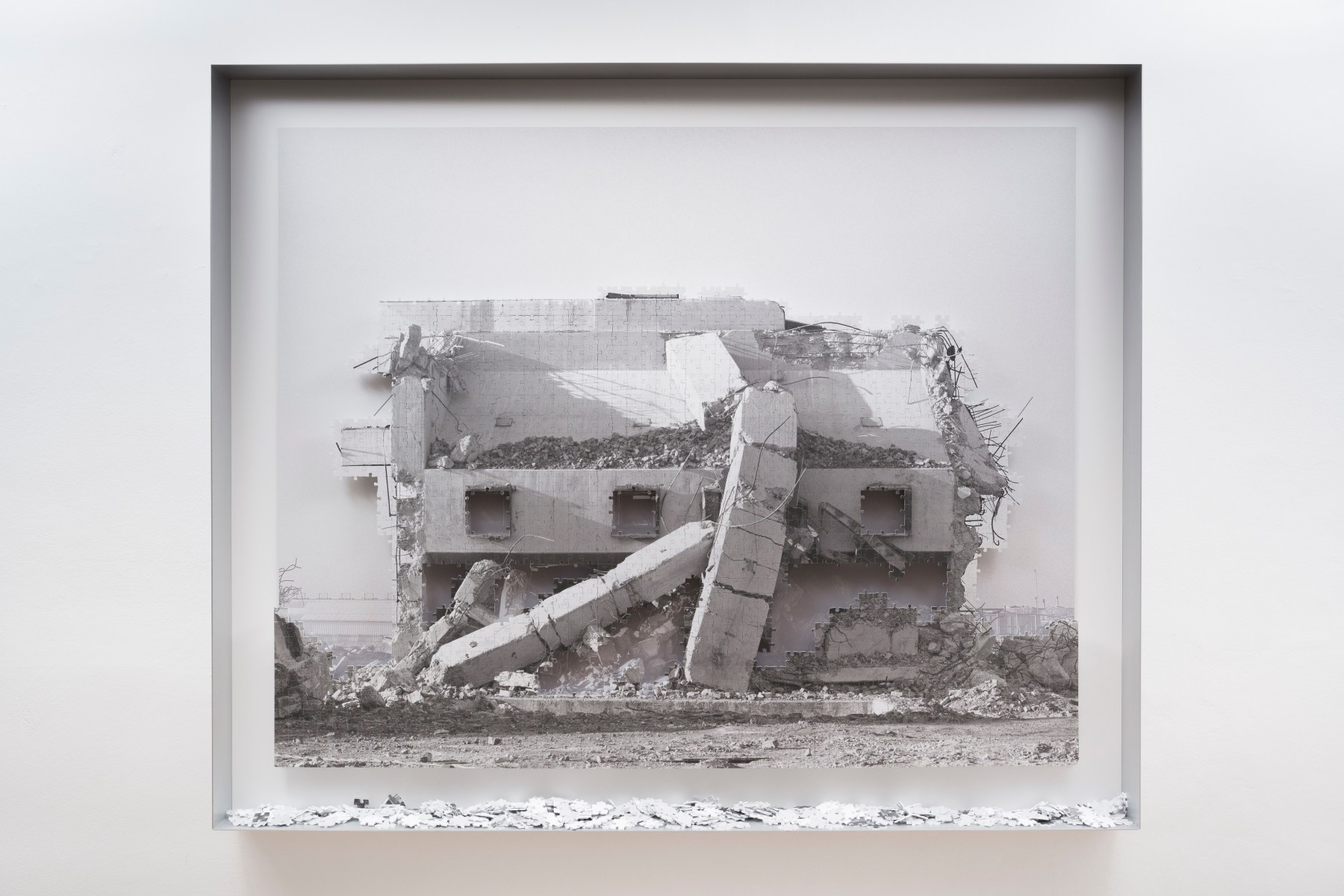
Carlos Garaicoa
From the series Puzzles (South Africa Mask)
2022
Electrostatic photography printed on methacrylate
and dibond, Forex, wood and metal
Work: 153 x 186 x 15 cm
Unique
YINKA SHONIBARE CBE
Over the past decade, Shonibare has become well known for his exploration of colonialism and post-colonialism within the context of globalization. Working in painting, sculpture, photography, film and installation, Shonibare’s work examines race, class and the construction of cultural identity through a sharp political commentary of the tangled interrelationship between Africa and Europe and their respective economic and political histories. Shonibare uses wry citations of Western art history and literature to question the validity of contemporary cultural and national identities
Shonibare is renowned for creating dynamic figures in motion, dressed in Victorian costumes reproduced in batik fabric, and the Flower Kid series are no exception. The costumed figure of a child is seen holding a bouquet of flowers that are critically endangered, speaking to the current context of global anxiety about the planet. The sculptures all incorporate a globe-like form in the position of a head printed with an astrological map. The names of the endangered flower species replace the names of the constellations and so the loss of nature here on earth is imbued with cosmic importance.
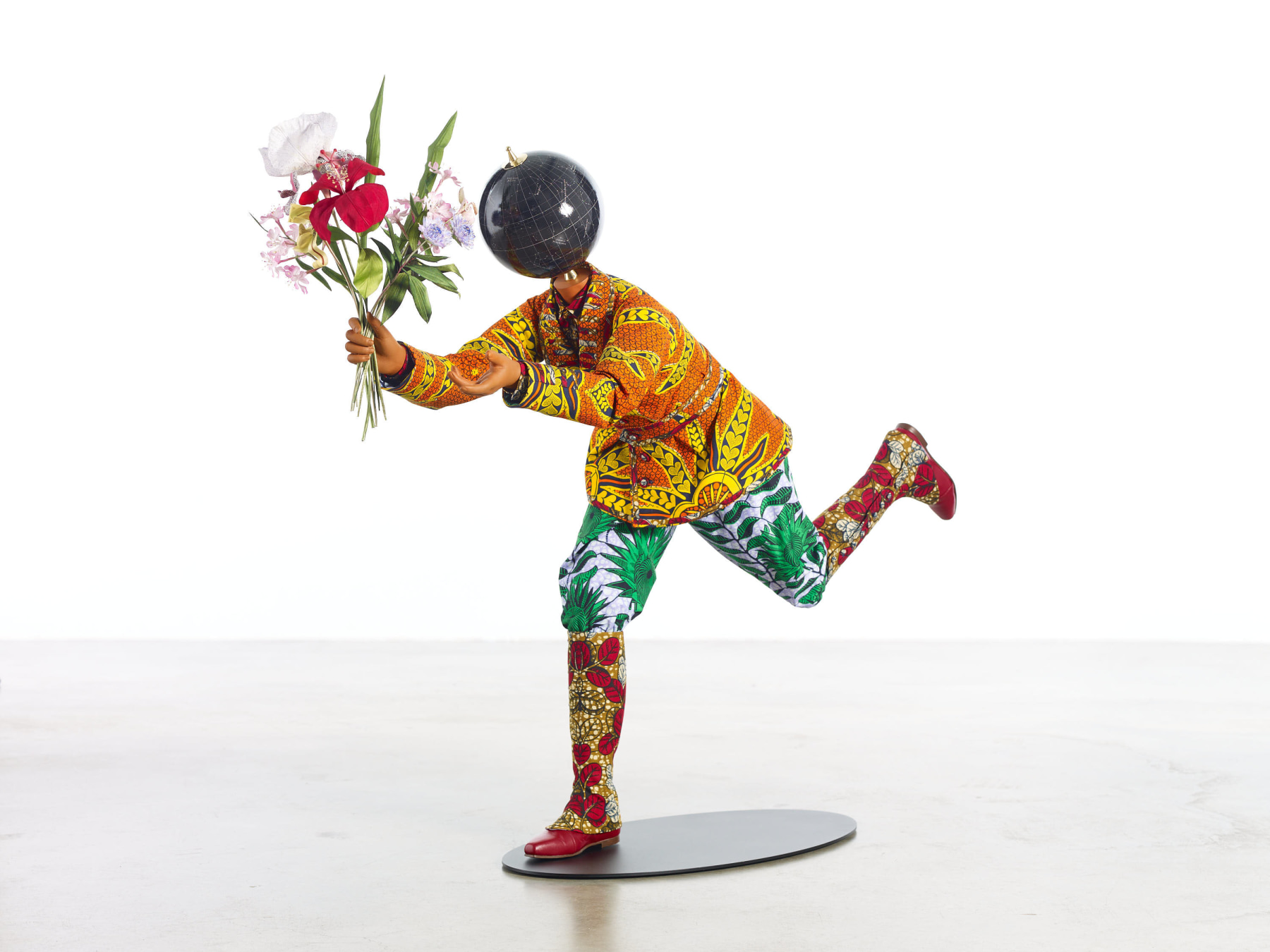
Yinka Shonibare CBE
Flower Kid (Boy), 2022
Fibreglass mannequin, Dutch wax printed cotton textile, globe,
brass, steel baseplate, painted fibreglass, wire, and silk.
123.5 x 45 x 150cm
Photographer credit, image courtesy: Courtesy the artist and Goodman Gallery, London,
Photographer: Stephen White & Co.
Over the past decade, Shonibare has become well known for his
exploration of colonialism and post-colonialism within the context of
globalization. Working in painting, sculpture, photography, film and
installation, Shonibare’s work examines race, class and the construction
of cultural identity through a sharp political commentary of the tangled
interrelationship between Africa and Europe and their respective
economic and political histories. Shonibare uses wry citations of Western
art history and literature to question the validity of contemporary
cultural and national identities
Shonibare is renowned for creating dynamic figures in motion, dressed
in Victorian costumes reproduced in batik fabric, and the Flower Kid
series are no exception. The costumed figure of a child is seen holding
a bouquet of flowers that are critically endangered, speaking to the
current context of global anxiety about the planet. The sculptures all
incorporate a globe-like form in the position of a head printed with an
astrological map. The names of the endangered flower species replace
the names of the constellations and so the loss of nature here on
earth is imbued with cosmic importance.
William Kentridge
Walking Frame forms part of an accumulation of elemental symbols within Kentridge’s broader practice. This series of bronze sculptures functions as a form of visual dictionary. The sculptures are symbols and ‘glyphs’, a repertoire of everyday objects or suggested words and icons, many of which have been used repeatedly across previous projects. The glyphs can be arranged to construct sculptural sentences and rearranged to deny meaning.
“The glyphs started as a collection of ink drawings and paper cut-outs, each on a single page from a dictionary. Previously I had taken a drawing or silhouette and given it just enough body to stand on its own feet - paper, added to cardboard and put on a stand. With the glyphs, I wanted a silhouette with the weight that the shape suggested. A shape not just balancing in space, but filling space. Something to hold in your hand, with both shape and heft.” - William Kentridge
Her forms part of an accumulation of elemental symbols within Kentridge’s broader practice. This series of bronze sculptures functions as a form of visual dictionary. The sculptures are symbols and ‘glyphs’, a repertoire of everyday objects or suggested words and icons, many of which have been used repeatedly across previous projects.
The glyphs can be arranged to construct sculptural sentences and rearranged to deny meaning.
“The glyphs started as a collection of ink drawings and paper cut-outs, each on a single page from a dictionary. Previously I had taken a drawing or silhouette and given it just enough body to stand on its own feet - paper, added to cardboard and put on a stand. With the glyphs, I wanted a silhouette with the weight that the shape suggested. A shape not just balancing in space, but filling space. Something to hold in your hand, with both shape and heft.” - William Kentridge
Nicholas Hlobo
Working with various found objects and materials — leather, rubber, bronze, ribbons, copper and brass —Nicholas Hlobo considers his artistic practice to be a kind of autobiography through which he articulates a sense of self. Through an obscured grammar within a language of abstraction, Hlobo explores his psychological, emotional and spiritual journey. “My work is about my journey, how I relate to myself and to the outside world. I’m very curious about the invisible, intangible and incomprehensible aspects of that journey and there is always a slipperiness to the process of figuring it out”, says Hlobo. Hlobo uses materials that have resonance to his personal memories, he explains; “Materials are found and used as a way to add more layers to the narrative. And how they are intervened with forms part of becoming a language that tells the story. Found objects have their own stories with various patinas depending on where they come from.”
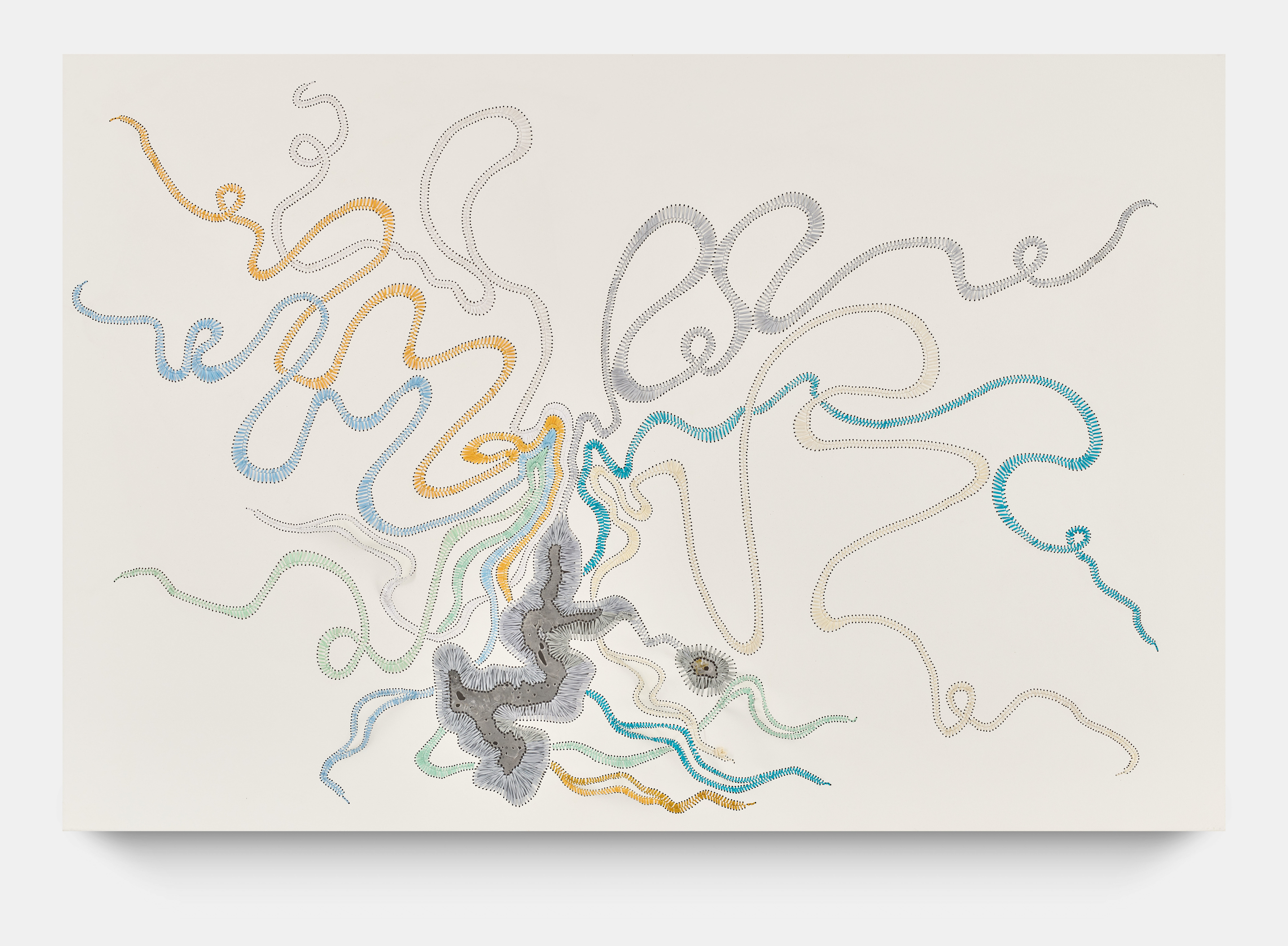
Nicholas Hlobo
Akanamva namphambili
2021
Ribbons and lead on Belgian Linen
120 x 180 cm / 47.2 x 70.9 in.
David Goldblatt
“I was drawn not to the events of the time but to the quiet and commonplace where nothing ‘happened’ and yet all was contained and imminent” David Goldblatt, The Last Interview, Steidl, 2019. Renowned for a lifetime of photography exploring his home country, David Goldblatt produced an unparalleled body of work within the city of Johannesburg, where he lived for 50 years. At age 17, Goldblatt would hitchhike from Randfontein, the small mining town where he was born, into Johannesburg. He walked around the city until the next morning, talking to night watchmen and following his intuition: “People would ask me what I was doing, and I would say, ‘I’m poeging. I’m walking around the city; I’m learning the city, and trying to take photographs.” The Coronation Restaurant set of hand prints are a rare early example of this process Goldblatt referred to as ‘poeging’, one which formed the foundation to Goldblatt’s practice.
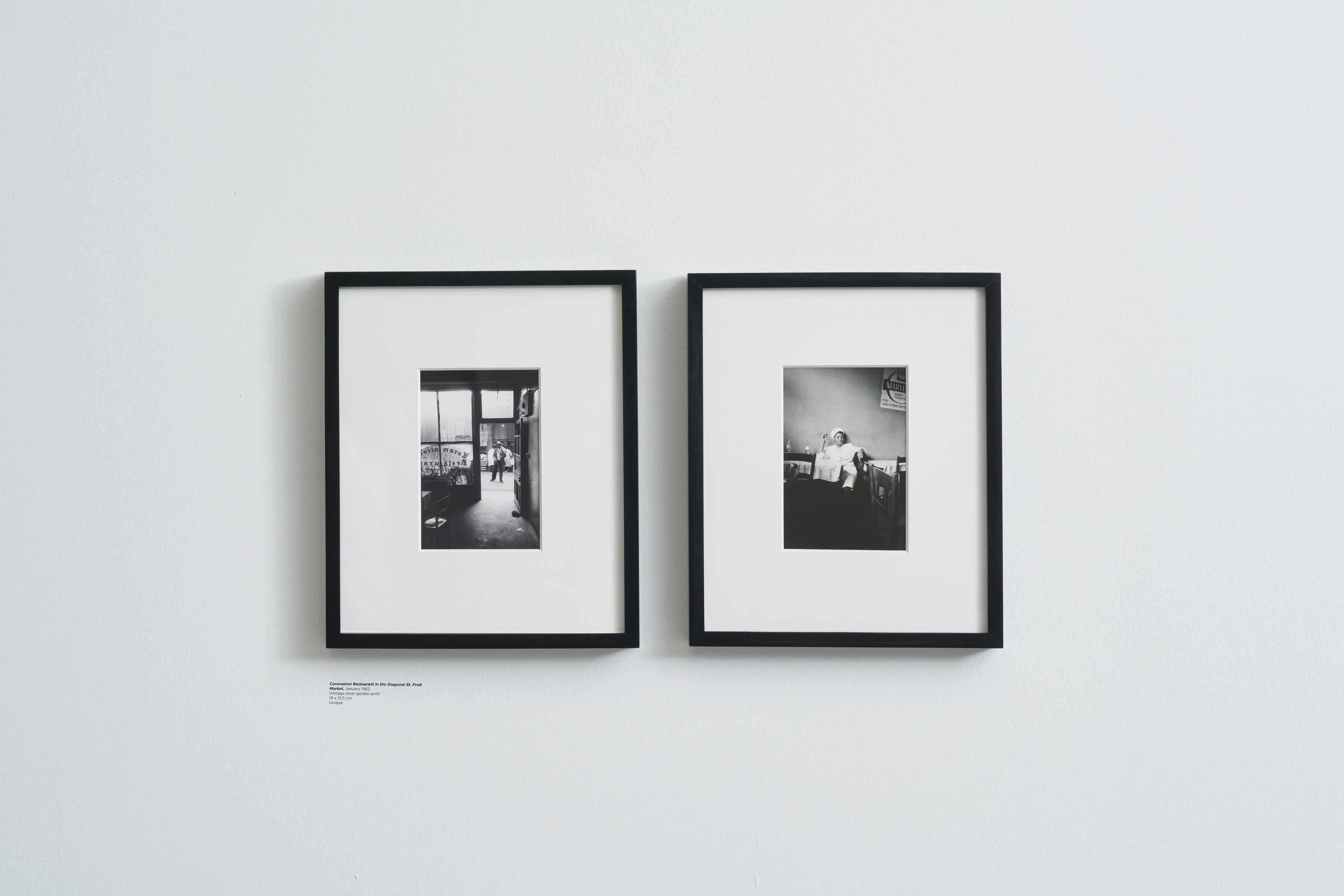
David Goldblatt
In the Coronation Restaurant, Diagonal St, January
1962
Silver gelatin hand print
Image (each): 19 x 12.8 cm / 7.5 x 5 in.
Sold as a set of 2.
“I was drawn not to the events of the time but to the quiet and commonplace where nothing ‘happened’ and yet all was contained and imminent” David Goldblatt, The Last Interview, Steidl, 2019. Renowned for a lifetime of photography exploring his home country, David Goldblatt produced an unparalleled body of work within the city of Johannesburg, where he lived for 50 years. At age 17, Goldblatt would hitchhike from Randfontein, the small mining town where he was born, into Johannesburg. He walked around the city until the next morning, talking to night watchmen and following his intuition: “People would ask me what I was doing, and I would say, ‘I’m poeging. I’m walking around the city; I’m learning the city, and trying to take photographs.” The Coronation Restaurant set of hand prints are a rare early example of this process Goldblatt referred to as ‘poeging’, one which formed the foundation to Goldblatt’s practice.



















